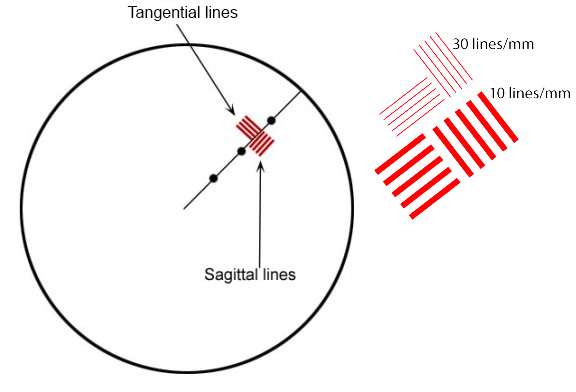Just MTF Charts
Just MTF Charts: Sigma Prime Lenses
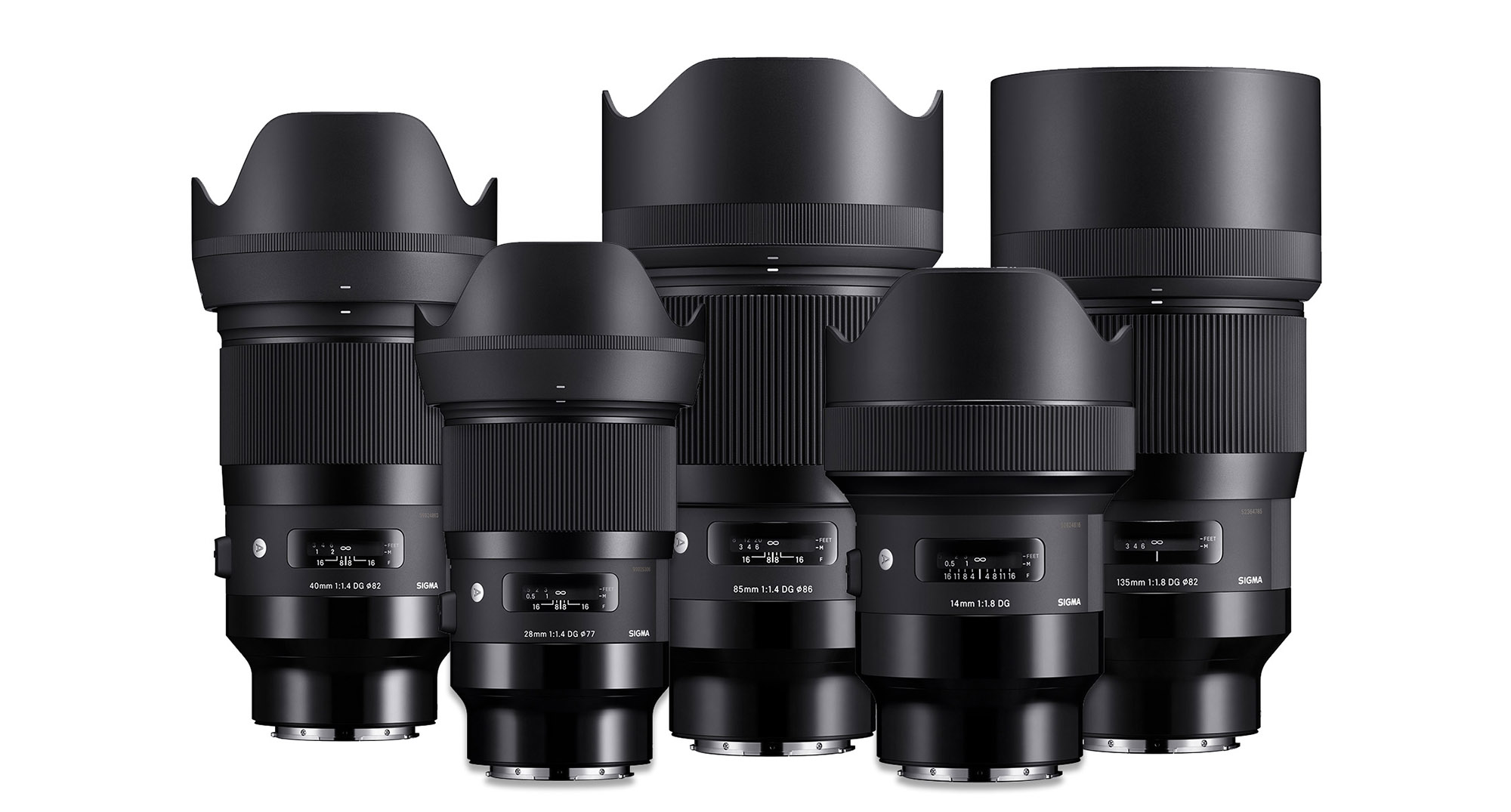
This is the third post publishing all of our MTF results so that methodology is consistent and they are easy to find. No comparisons, no commentary, just the test results for you to use and abuse as you see fit. We’ll continue today with the Sigma prime lenses.
For those who wonder, the results presented are for EF (Canon) mount lenses, but we do test them in F and FE mount also (with appropriate glass for the mount), and there is no difference.
A Quick How to on Reading MTF ChartsIf you’re new here, you’ll see we have a scientific methodology to our approach, and use MTF charts to measure lens resolution and sharpness. All of our MTF charts test ten of the same lenses, and then we average out the results. MTF (or (or Modulation Transfer Function) Charts measure the optical potential of a lens by plotting the contrast and resolution of the lens from the center to the outer corners of the frame. An MTF chart has two axis, the y-axis (vertical) and the x-axis (horizontal). The y-axis (vertical) measures how accurately the lens reproduces the object (sharpness), where 1.0 would be the theoretical “perfect lens”. The x-axis (horizontal) measures the distance from the center of a lens to the edges (measured in millimeters where 0mm represents the center, and 20mm represents the corner point). Generally, a lens has the greatest theoretical sharpness in the center, with the sharpness being reduced in the corners. Tangential & Sagittal LinesThe graph then plots two sets of five different ranges. These sets are broken down into Tangential lines (solid lines on our graphs) and Sagittal (dotted lines on our graphs). Sagittal lines are a pattern where the lines are oriented parallel to a line through the center of the image. Tangential (or Meridonial) lines are tested where the lines are aligned perpendicular to a line through the center of the image. From there, the Sagittal and Tangential tests are done in 5 sets, started at 10 lines per millimeter (lp/mm), all the way up to 50 lines per millimeter (lp/mm). To put this in layman’s terms, the higher lp/mm measure how well the lens resolves fine detail. So, higher MTF is better than lower, and less separation of the sagittal and tangential lines are better than a lot of separation. Please keep in mind this is a simple introduction to MTF charts, for a more scientific explanation, feel free to read this article. |
Sigma Prime Lenses
14mm f1.8 DG HSM Art
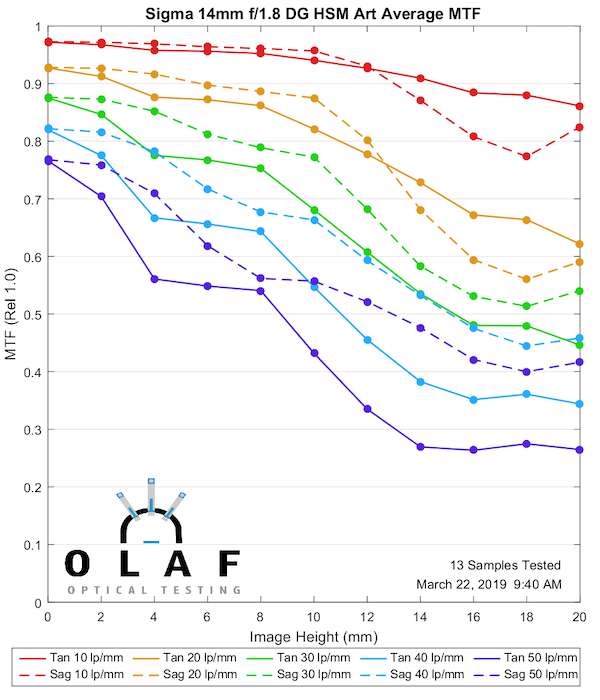
Lensrentals.com, 2018
20mm f1.4 DG HSM Art
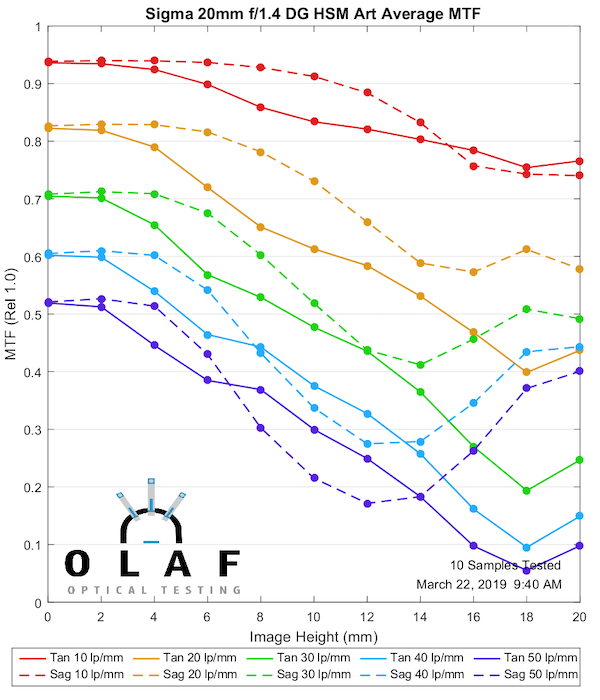
Lensrentals.com, 2018
24mm f1.4 DG HSM Art
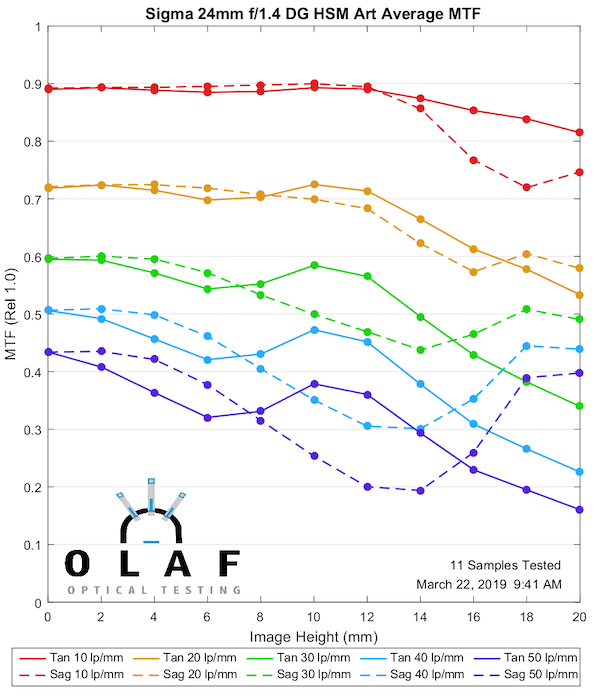
Lensrentals.com, 2018
28mm f.14 DG HSM Art
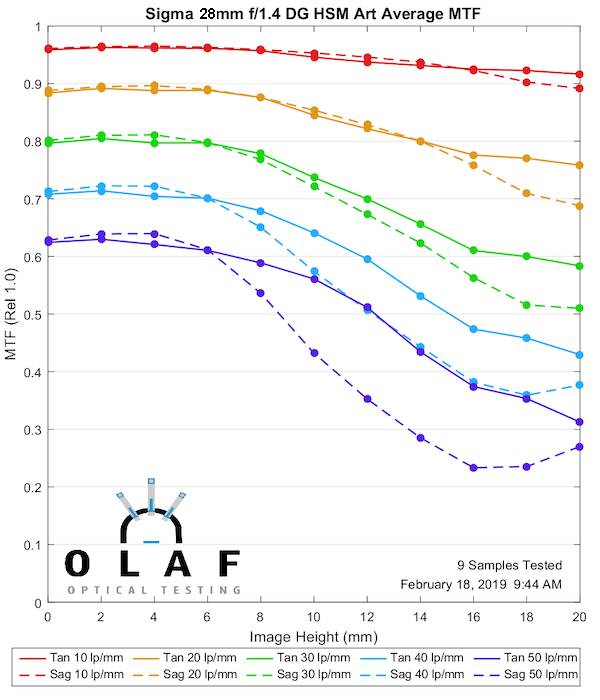
Lensrentals.com, 2019
35mm f1.4 DG HSM Art
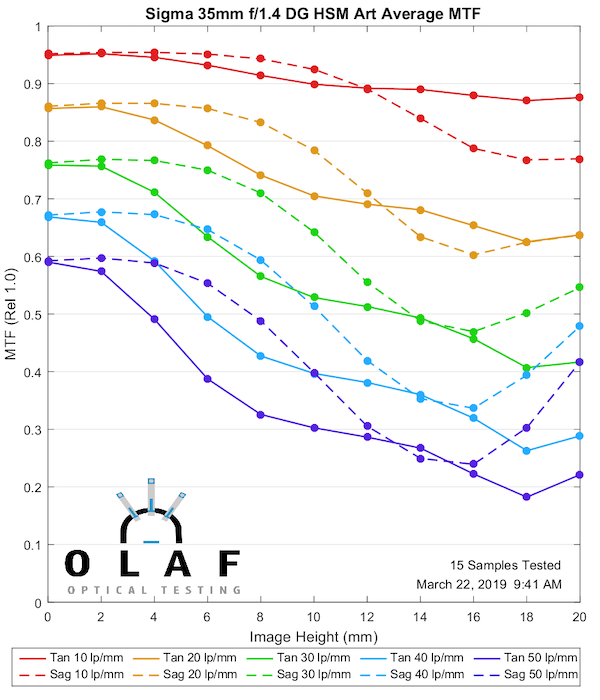
Lensrentals.com, 2018
Sigma 40mm f1.4 DG HSM Art
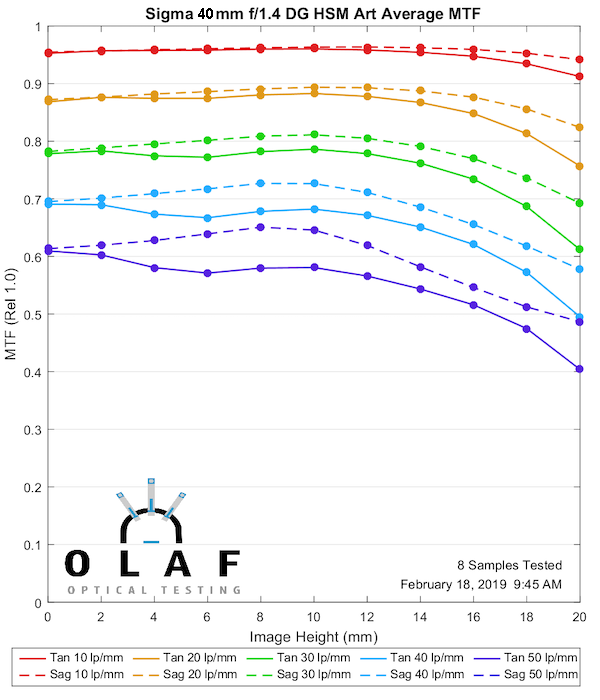
Lensrentals.com, 2019
50mm f1.4 DG HSM Art
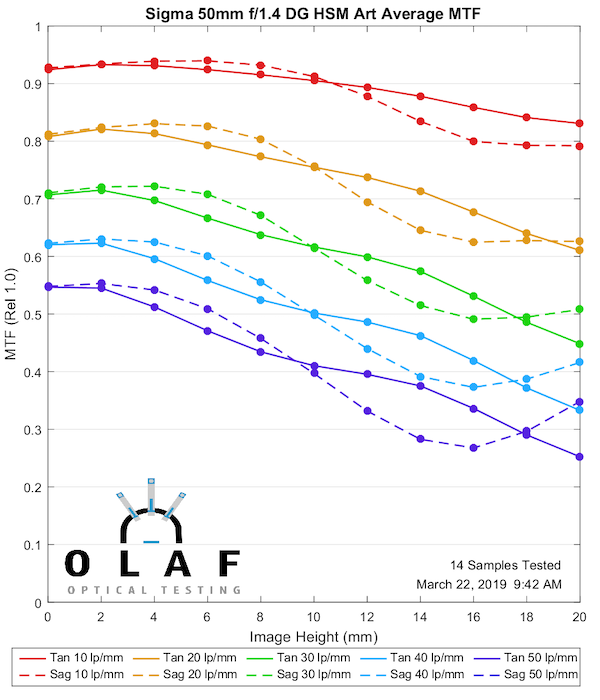
Lensrentals.com, 2019
85mm f1.4 Dg HSM Art
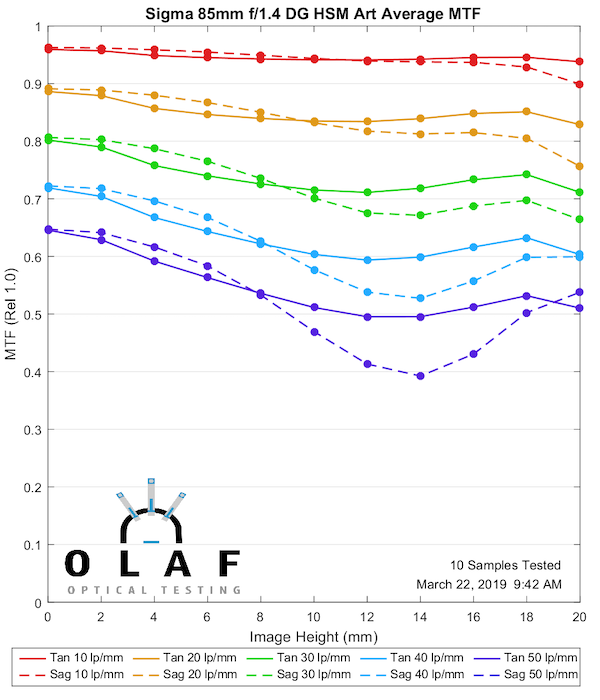
Lensrentals.com, 2019
105mm f1.4 DG HSM Art
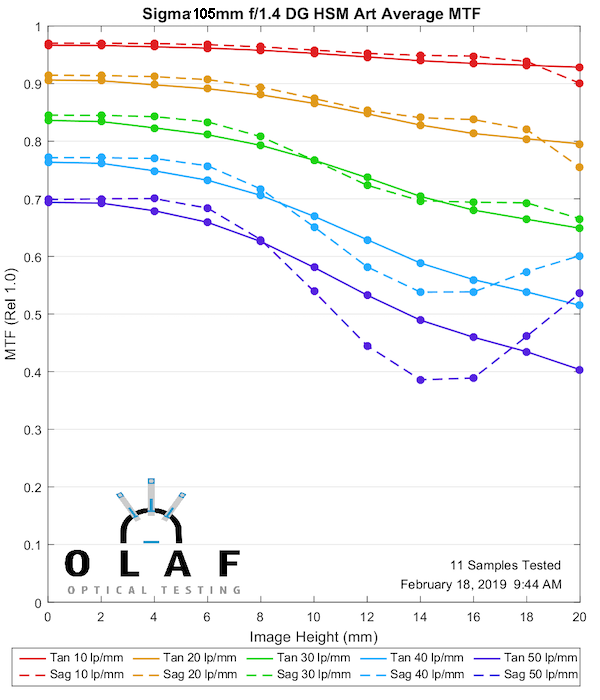
Lensrentals, 2019
135mm f1.8 DG HSM Art
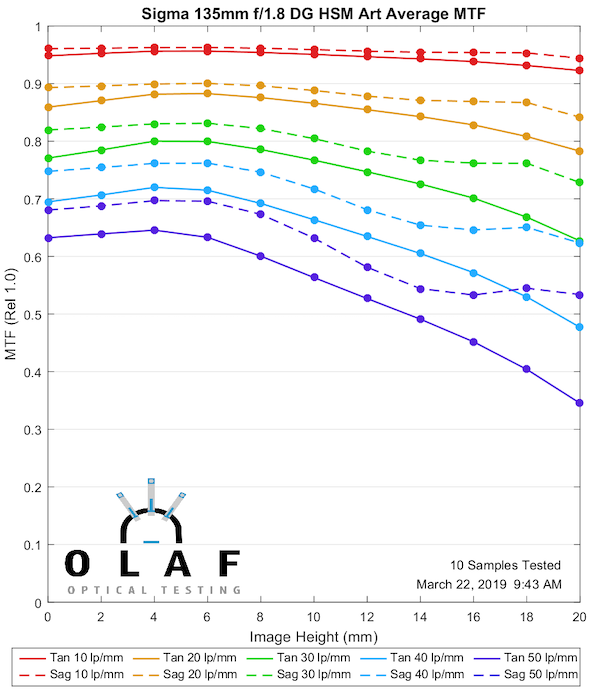
Lensrentals.com, 2019
For a look at all the Just MTF Articles we’ve done so far, be sure to check them out here.
Roger Cicala, Brandon Dube, and Aaron Closz
Lensrentals.com
March, 2019
Addendum: The Digital Picture is hosting the MTF charts on their comparison tool, putting them up as we publish them here. It’s a great way to compare two lenses for the one or two of you who like to do that. The Canon and Zeiss primes are already up, the Sigma should be added by tomorrow.
Author: Roger Cicala
I’m Roger and I am the founder of Lensrentals.com. Hailed as one of the optic nerds here, I enjoy shooting collimated light through 30X microscope objectives in my spare time. When I do take real pictures I like using something different: a Medium format, or Pentax K1, or a Sony RX1R.
-
Ivo de Man
-
Mark Harris
-
Mike Cropper
-
Gerard R
-
Roger Cicala
-
Andreas Werle
-
Tyler Mercer
-
Roger Cicala
-
Tyler Mercer
-
DrJon
